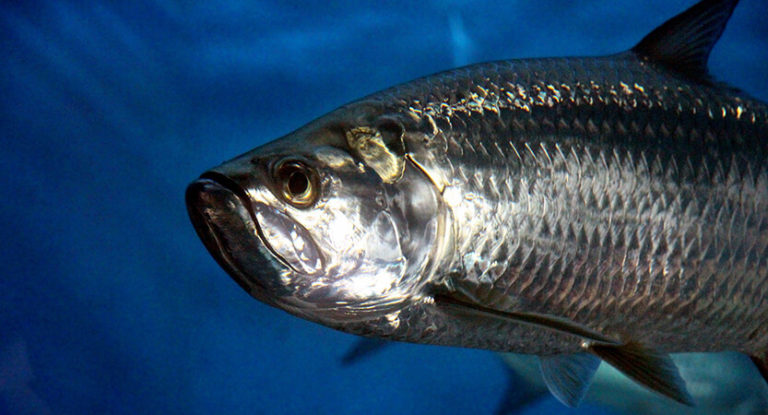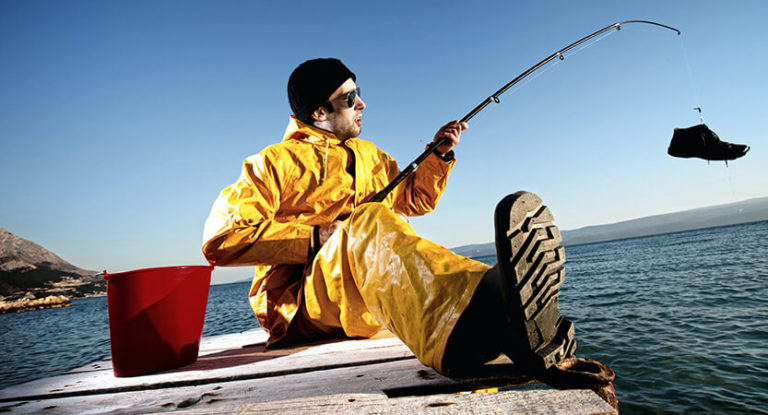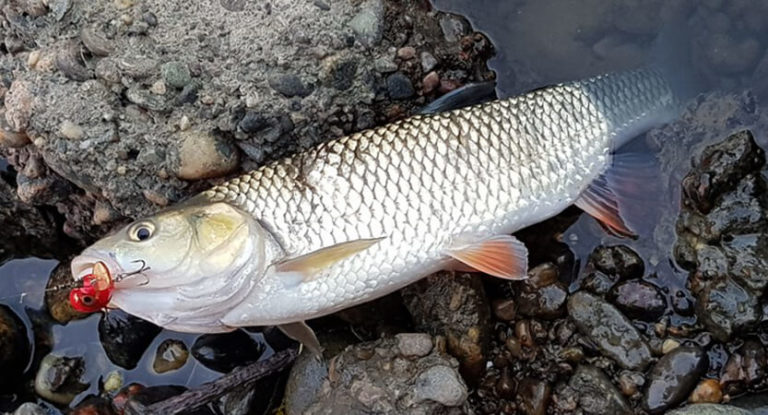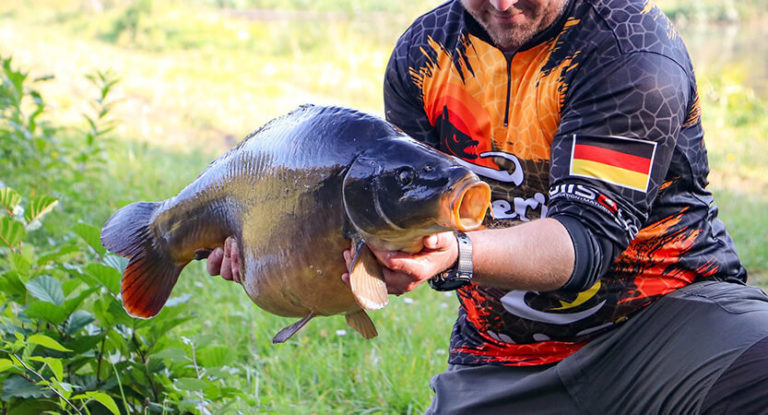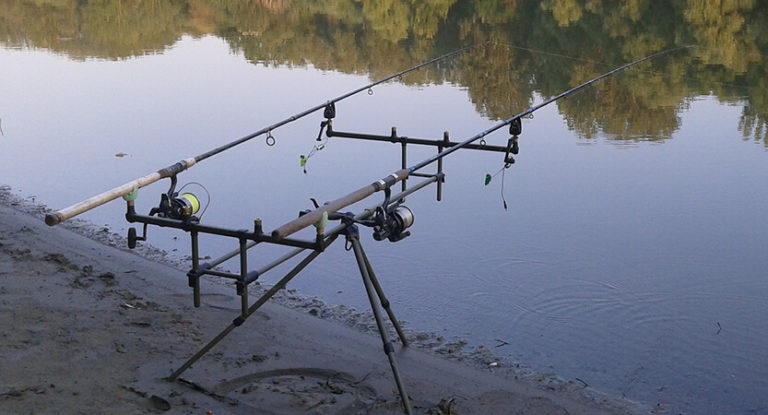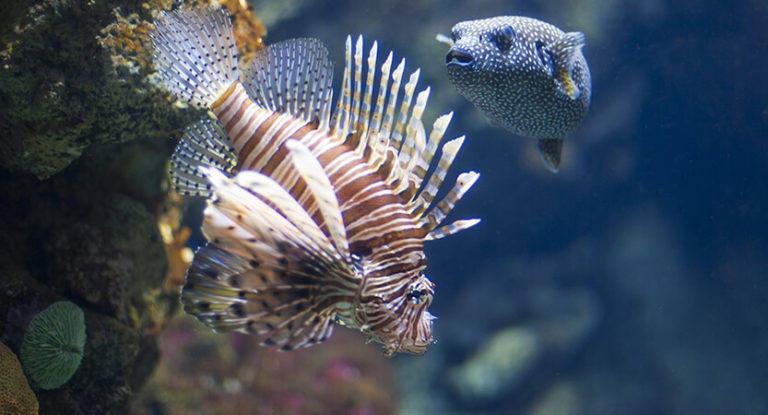Why did the fisherman come back from the pond with a full cage yesterday, but today he barely bites? It’s a shame, but nothing can be done about it: all that remains is to understand the reasons and not repeat previous mistakes. Let’s figure out when fish bite and what factors affect the behavior of representatives of freshwater ichthyofauna. After reading this article, you will understand the nature of the mechanisms that govern fish activity.
Unfortunately, there are no universal recipes here. There is no such magic sign by which you can determine whether it is worth nominating for a pond today. However, based on the combination of weather factors in relation to the season and time of day, it is possible to roughly outline the prospects. And some points can be adjusted: a good angler has absolutely no cool weather at all!
Here is an overview of the content of this tutorial, feel free to jump to any section you care about:
For more fishing instructions, take a look at these popular Trizily links: Best Bass Fishing Lures, Best Fishing Kayaks.
- Beginners Guide To Feeder Fishing
- The Ultimate Guide To Catching Crayfish
- Recreational Fishing- Time, Place and Bait
What factors affect fish biting?
Among the most significant factors influencing the behavior of fish, one should highlight:
- Seasonal . In this case, we are talking about seasonal variations in the activity of representatives of the ichthyofauna. If in summer the behavior of fish is more or less stable, then in winter most of them fall into a state of passivity (this is especially true for representatives of cyprinids). Spring fishing on the eve of spawning is usually successful, but during this time fishing restrictions are imposed in some ways, or even bans.
- Weather . The representatives of the fish fauna are very sensitive to weather factors . They react especially strongly to pressure drops and changes in water temperature. But it is inappropriate to consider weather factors without interrupting the season: what is good in summer, in winter – to bite.
- Local . In a stagnant body of water, fish can behave completely differently than on a turbulent river. And the choice of a place for fishing in the conditions of one reservoir should not be taken lightly. The following picture is often observed: in one fisherman, the fish stubbornly ignores the bait, and his neighbor, who has settled literally ten meters away, does not have time to bait.
Season
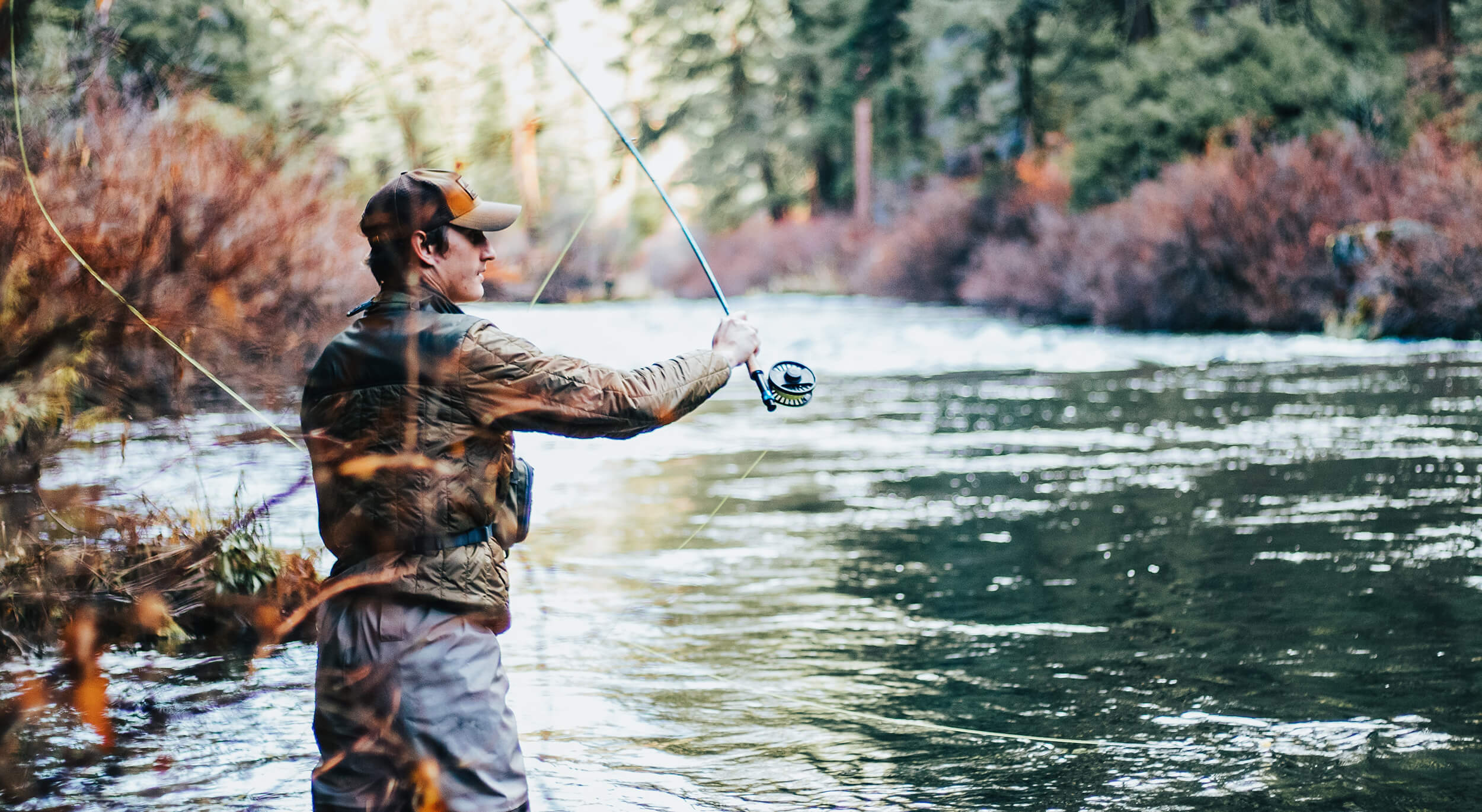
Let’s take a quick look at the seasonal patterns of fish behavior. This must be done in order to tie it to weather factors. And already at the end of the article, we will take a closer look at the angler’s calendar and see what to expect from representatives of specific species in a given month.
So let’s go:
- Winter . Winter can be roughly divided into three periods. The first, the first ice, is characterized by an excellent bite of a predator. Representatives of carp species also show some activity. In the most severe frosts, the thickness of the ice increases, the rotting of algae is activated and the fish experiencing oxygen starvation practically ceases to bite – deafness sets in. Before the ice drift, representatives of the freshwater ichthyofauna become active again.
- Spring . During this period, the overwhelming majority of the inhabitants of our reservoirs are preparing for spawning . Pike spawns first (in March), and thermophilic species (the same crucian carp or carp) postpone this action until the end of May-June. Spawning time strongly depends on the geolocation of the reservoir, as well as the temperature regime of a particular year. Before spawning, representatives of the ichthyofauna are covered with an eating hysteria, then the fish is practically not caught, as it is busy with reproduction. After a rest of 1-2 weeks, another, not so pronounced wave of gluttony follows.
- Summer . This season for most species is characterized by a stable biting of medium intensity. The hotter, the less active the fish. The periods of activity shift to the morning and evening hours, and large fish usually feed at night, preferring to rest at depth during the day.
- Autumn . At the beginning of autumn, the fish behave according to the summer regime, but with the onset of a cold snap, the periods of activity shift. Inhabitants of reservoirs switch to day mode, gradually preparing for winter. The weather is not stable, the bite pattern is not very predictable. The fish clearly prefers animal food, stocking up on proteins and fat for the harsh winter.
Freshwater cod lives outside this general regime. Cold-loving burbot in summer is almost elusive, because its element is bad weather and frost. It even spawns in February, when other fish do not even think about it.
Times of Day
Vision in fish is not as well developed as in mammals (they have different sensory systems), so they are not so dependent on the level of light. However, it is customary to divide them into daytime and crepuscular (nocturnal) species, depending on the period of maximum activity.
For example, pike perch is a deep twilight predator, and perch is a twilight day. However, this factor is not so important: even a daily ruff or bleak, under certain conditions, can change the schedule of activity. If it is very hot, all species become passive. Morning brings the desired light, evening – coolness after a hot day. Therefore, in the summer, it is best to fish at this time.
The larger the peaceful fish, the more it gravitates towards the night regime. The most successful at night is the catch of trophy bream , carp, as well as a number of predators (catfish, pike perch, burbot).
In the wilderness, the biting periods are unpredictable, the fish is passive, but usually bursts of activity occur during daylight hours.
Atmosphere pressure
Moving on to atmospheric pressure . This is the most significant factor in determining fish activity. However, one should not believe the legends that the increasing pressure is able to “push” the fish deeper, and the decreasing pressure, on the contrary, “pushes” it to the surface.
The fish swims, changing depths many times during the day, so that it is adapted to direct pressure drops. A dive to 10 m gives a plus to the pressure in the whole atmosphere, while the atmospheric pressure drops are measured in tens of mmHg.
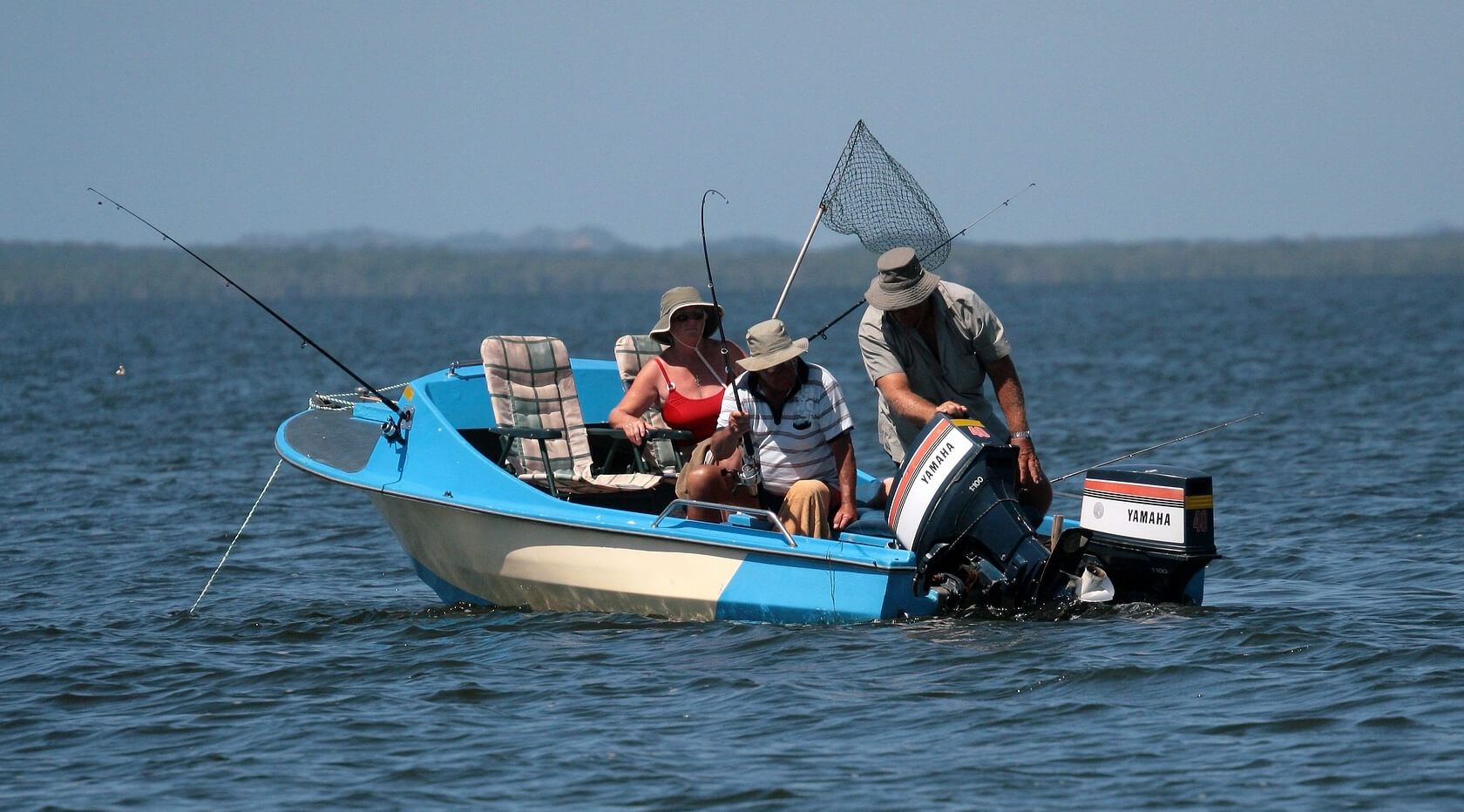
However, the sensing of fish is not only different from ours, but also surprisingly sensitive. They somehow feel the changes in atmospheric pressure and begin to prepare for a change in weather. Instincts developed over generations tell the inhabitants of the reservoir that big changes are coming, and they react to them in accordance with experience.
Sometimes, with a sharp decrease in pressure, a predatory fish begins to hunt intensively, trying to stock up on nutrients (what if something), and a peaceful fish loses its appetite, goes to the bottom and waits out hard times.
The most favorable is the stable pressure characteristic of the region of residence. At zero altitude from sea level, the normal pressure is 760 mmHg. The higher the level, the lower the normal pressure. For example, for most of the flat regions, an indicator of 750 mm is optimal. rt. Art.
An increase in pressure is well accepted by peaceful fish, a decrease favors effective catching of a predator. However, you need to understand that a gradual change in pressure and a sharp jump are different things. The fish organically adapts to smooth changes and practically does not change the character of behavior. But a sharp jump confuses her, sometimes completely discouraging her appetite. So sometimes it takes a couple of days for the inhabitants of the reservoir to adapt to new conditions.
Wind conditions
It is unreasonable to consider the wind situation without taking into account the season, geolocation and other factors. Complete calm in summer is usually associated with persistent high blood pressure and the onset of heat. During this period, predatory fish bite weakly, and peaceful cyprinids also lose activity. As mentioned above, periods of food activation shift into early morning, late evening and night.
At such moments, a breeze from the west or northwest is favorable. The south wind is extremely undesirable: it gets even hotter with it. Thermoclines are formed in the water: it stratifies, as it were, according to the degree of heating. In small bodies of water, fish can even die from thermal shock and lack of oxygen. The wind from the east is usually neutral, but much depends on its strength and the location of the atmospheric fronts at the current moment.
But in cold rainy weather, the southern breeze, on the contrary, is very favorable in all respects. The north wind, especially strong, is very undesirable, and fishing for any fish, except for burbot, is not very promising during such periods.
The change in wind is definitely an unfavorable factor: it marks the onset of the atmospheric front, and the fish need time to adapt to changing external conditions.
Temperature
It is clear that the air temperature for fish is especially unnecessary, however, the corresponding characteristic of the water directly depends on this parameter.
For each species, there is an individual temperature range in which the fish feels comfortable. Among the most thermophilic species are mainly carp species (especially carp, crucian carp, silver bream) plus catfish. The recognized champion in the category of cold resistance is the expected burbot, followed by pike perch, pike and perch by a wide margin.
Let’s say right away: the fish will bite only in conditions that are comfortable for themselves. And it’s better for her to be cold than too hot. Let, due to deafness, most of the representatives of the ichthyofauna fall into a kind of lethargy, practically ceasing to eat, but with the onset of warmth they are reborn to life. There were cases when even perch frozen into the ice came to life safely.
But in the heat, the fish does not just freeze: it literally suffers. Water that is too warm is extremely poor in oxygen. The smaller the reservoir, the worse the aeration. Moreover, a plus to other “delights” is added water bloom, algae rotting and decomposition of other bio-waste. These processes are accelerated, devouring the remaining oxygen, which is especially noticeable in small reservoirs with stagnant water. If you happen to fish in small ponds, you probably only caught crucian carp or rotan – other fish simply cannot withstand such conditions.

Precipitation
As a matter of fact, precipitation has little effect on the behavior of representatives of the ichthyofauna – it is like rain or snow for them, everything is the same. However, precipitation is accompanied by other atmospheric and natural phenomena to which fish are really sensitive.
A heavy downpour with a thunderstorm and a squally wind is unfavorable a priori. Not only do the fish usually refuse to bite, but the fisherman is also at risk of being struck by lightning.
However, after a thunderstorm, gluttony can come, especially if there was a stifling heat before. The rising wave washes away a lot of goodies from the bottom, and the water is saturated with oxygen, awakening a remarkable appetite in the majority of the inhabitants of the reservoir. But in early spring, during the period of heavy rains, fishing is not very promising. Rain streams mix with the products of snow melting, all this flows into the reservoir, which leads to unwanted cloudiness of the water. The predator, in any case, is not very fond of this.
A light drizzle is almost always favorable, especially if it is not accompanied by a strong wind. Hail is definitely better to wait out in the shelter.
In winter, a small soft snow (preferably wet) indicates impending warming. The fish loves this weather: the pike revives, and you can pull on an abundance of roach and perch. But the lawlessness that the deaf-winter blizzard creates, although it does not reach the inhabitants of the reservoir directly, negatively affects their activity. Stay at home, relax, wait for good weather!
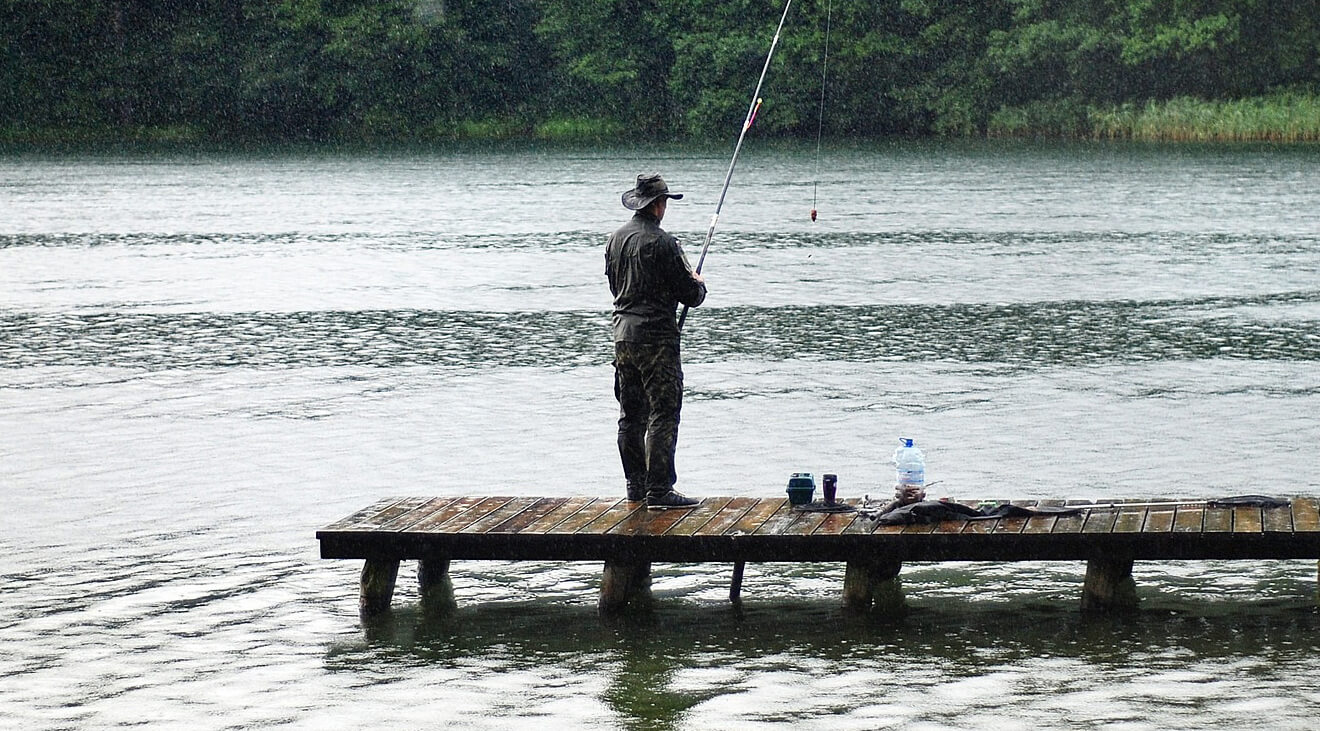
Moon phases
If we were talking about sea fishing, it would be possible to talk at length about the phases of the moon and the influence of the night star on the behavior and biting of fish. In the oceans, the ebb and flow are really felt, regulating the lifestyle of representatives of the underwater fauna.
In fresh water bodies, fluctuations in the water level caused precisely by the influence of the moon are almost imperceptible, and changes in the behavior of fish, too. In general, do not pay attention to the lunar calendar – let gardeners and gardeners be guided by it.
Water condition
Transparent water indicates the presence of a large amount of oxygen and the minimization of the proportion of decay products. This is a very favorable factor. However, fishing in slightly muddy waters is often more productive. Representatives of peaceful species perceive turbid water as a masking factor and behave more freely.
The pike does not really like the conditions of limited visibility: in the final phase of the attack, it relies on sight, but it makes no difference to a poorly seeing pike perch, because it is guided mainly by other senses .
Substantial turbidity of the water during a flood reduces the intensity of gluttony. Water bloom can also be considered as a conditionally unfavorable factor. This is a signal of the onset of a pore of oxygen deficiency. However, the same carp and crucian carp feel great at this time. Other fish during this period reduce the intensity of biting and switch to a night diet.
Fishing place
Perspective sites along the shores of visited water bodies often bear traces of human presence. There, coastal vegetation has been removed for easy casting, footbridges can be equipped. Sit there, you can’t go wrong.
However, when it comes to fishing in a remote place, you will have to look for a promising location . In this case, measuring depths and studying the bottom topography will help , and if you really do not want to bother – at least determining promising places by the color of the water (at depth it is always darker) or a change in the nature of the current.

Pay attention to:
- pits, curbs and heaps;
- all kinds of bottom anomalies with a difference in depth and a change in the nature of vegetation;
- clear water windows in thickets and water areas beyond the border of coastal vegetation;
- snag, driftwood and other supports;
- places of confluence of tributaries into the main channel;
- quiet coastal backwaters;
- the boundaries of the change in the nature of the flow;
- waters under the steep coast.
It has been proven that fish prefer to stay where there is either more food or where to hide. Better if both are in one bottle. This is exactly the picture observed in the above locations.
Do not discount the wind situation: it is better to fish from the bottom from the leeward shore, closer to the surface – from the windward one. However, adjustments are made by the nature of the reservoir and the strength of the wind: sometimes it is simply impossible to throw the tackle from the windward bank.
Angler’s calendar
Now let’s take a closer look at the nuances of fishing in relation to seasonality. We bring to your attention the angler’s calendar, compiled on the basis of the results of many years of research.. It does not pretend to be universal, since it does not happen year after year, and on each reservoir the inhabitants have their own habits and food preferences. However, thanks to this calendar, you will at least understand when fish of various species bite better and how to get it more efficiently.
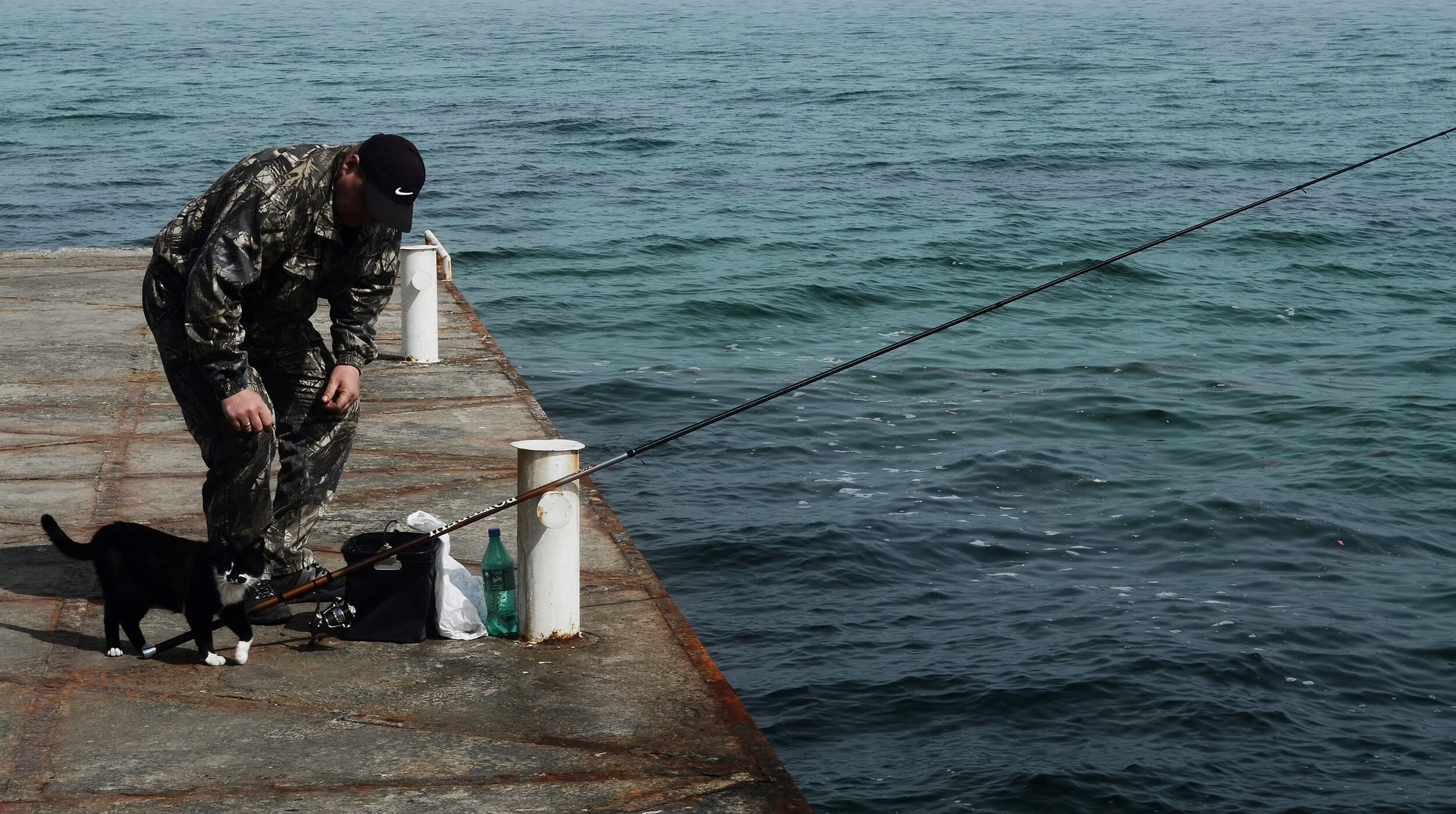
January
This month marks the height of winter, in other words, deafness . In most bodies of water, the fish becomes passive and goes to considerable depths. The biting periods are carried over mainly to daylight hours. The ideal weather is cloudy warming, possibly with slush. In severe frosts, as well as in bad weather, accompanied by a strong wind, it is better to sit at home.
During this period, it is better to catch pike on girders , setting live bait near the very bottom. The fish must be actively fed, adding dry blood is in the process. Relevant marmooska tackles (better with replanting bloodworms), sometimes peaceful fish is simply to crank on float tackle.
Roach and perch, as well as bream, remain relatively active. Burbot is excellently caught – unlike other fish that live in our reservoirs, he loves the cold in principle. Trout is also active.
February
Nature is beginning to wake up little by little, although sometimes the February frosts are even stronger than the January ones. Representatives of the ichthyofauna are gradually increasing their activity: they anticipate the approach of an ice drift.
According to tradition, the most active among all fish during this period are roach and small perch: they peck well on a jig with a bloodworm, do not disdain even without a rim. The pike is gradually increasing its activity, without passing by the spoon and bait tackle. On the balancer, you can catch a decent pike perch or humpback perch. Burbot during this period in most water bodies either prepares for spawning, showing a remarkable appetite, or lays eggs, showing little interest in what is happening around.
As in January, the most catchy weather is cloudy days with slush. But at the end of the month, when the sun begins not only to shine, but also to warm, in clear weather you can catch very well. It is possible that a large bream will be tempted by a jig with a planting.
March
It is getting warmer, water bodies are gradually freed from ice. Fishing on the last ice is very promising, but also very risky. You should closely monitor the condition of the ice, scout the path of the foot and avoid potentially dangerous areas in every possible way.
On the last ice, fishing for peaceful fish with a jig is very effective, and the rewinder also shows itself well. The most common prey is roach, silver bream, bream. The ubiquitous perch continues to peck steadily and faithfully.
At this time, it is important not to miss the pre-spawning gore of the pike: the striped predator is active both on the last ice and after its disappearance. On the ice, it is better to use a balancer, a vertical trolley or a gutter, after its descent – a classic spinning rod with a silicone bait.
April
April is marked by the complete release of water bodies from ice, the onset and retreat of floods. The fish bite actively, because it prepares for spawning and replenishes its energy reserves with all its might. This is a very good time for fishing. All types of gear are effective: from float to bottom. The predator continues to be caught on a spinning rod loaded with silicone and spinners. Trout is successfully caught on paid reservoirs.
Fishing in flooded meadows is very promising while the water is still high. Only awakened carp, carp, crucian carp, grass carp, asp actively take animal bait. Fishing on shallows is promising, where the water warms up faster.
It would seem that the golden time for the fisherman is coming, but there is one grandiose “but”: in connection with spawning in most reservoirs, restrictions are introduced. You can only fish from the shore using passive gear equipped with one or two hooks. Sometimes spinning with artificial bait is also allowed. And on some bodies of water, fishing is strictly prohibited – it is better not to appear near them with tackle.
Keep a close eye on fishing bulletins – the times of restrictions, as well as their conditions, vary by region.
May
In May, in most regions, the spawning ban continues, so you need to be careful when choosing tackle and fishing places (in spawning grounds, fishing is prohibited in principle).
Some representatives of the ichthyofauna have already successfully spawned, rested and are actively gaining mass again. At this time, the second wave of gluttony in the pike sets in, so worthy specimens can be obtained for spinning with any iron or wobbler.
The best places for fishing during this period are vast waters: wide rivers, reservoirs, lakes. The fish continues to peck at animal baits, but peaceful representatives of the ichthyofauna do not refuse dough, bread, cereals, peas – in a word, vegetable baits.
The optimal tackle during this period is a float and a feeder . With them, the catch is normal, and the spawning prohibition is not violated. It bites so far throughout the daylight hours, but on hot days the activity of the inhabitants of reservoirs decreases at noon.
June
Spawning restrictions are lifted in most regions, and there is freedom for the fisherman . One problem: for most of the inhabitants of reservoirs, activity is significantly reduced. They have already eaten after spawning and are moving on to a stable well-fed existence. There is a lot of food in the reservoirs, you can attract fish only with something especially tasty.
In June, peaceful fish of carp species are well caught: carp itself, carp, crucian carp, tench, grass carp. During this period, they prefer vegetable baits. The thermophilic catfish is activated, which is successfully caught by cropping.
But with regard to pike and pike perch, a period of especially filigree fishing begins: at this time they can be lured out of shelters only by applying the bait directly under the nose. However, even a passive predator will not be able to resist against live bait on a zakidushka installed in a good place. Burbot is not caught at all until the end of summer – it goes to great depths and waits out the heat.

July
July in the middle lane is usually marked by the hottest weather. This means that cold-loving fish practically do not bite, at least during daylight hours. The heat is best tolerated by carp and crucian carp, but there is a limit to their thermophilicity: they experience hot days mainly at depth.
The biting period shifts to dawn and dusk, large bream and carp often feed at night. They are joined by pike perch and catfish. At dawn there is a chance to lure a lurking pike out of the thickets and snags with a spoon or wobbler.
The float rod mostly catches trifles: roach, silver bream, rudd, bleak, small crucian carp. Fishing with a feeder and all other types of bottom gear is effective. On clean waters, you can use gum carp rods with several leashes.
Any cold snap, and even with rain, is for the good: the water is saturated with oxygen, cools down, creating a favorable microclimate. Cloudy weather in July is good for catching any fish, both peaceful and predatory.
August
August practically repeats the July picture. At the beginning of the month, water blooms in many stagnant reservoirs, which means a total oxygen deficiency. Such conditions are good, perhaps, for carp species. For other representatives of the ichthyofauna, it is better to go to reservoirs with running water.
By the end of the month, the water is gradually cleared, its temperature decreases. The fish begins to peck more actively, and even peaceful inhabitants of reservoirs begin to lean towards animal food, grabbing maggots, worms, and caddis larvae with appetite.
Float tackles are becoming relevant again. The fish is gradually switching to a daily diet. The predator is gradually becoming more active, which goes both to live bait and to all types of artificial baits.
This time is very much appreciated by the anglers, although in August all representatives of the freshwater ichthyofauna are quite voracious, with the exception, perhaps, of the cold-loving burbot and trout, although they are gradually activated by autumn.
September
Any fish is caught in September: it activates after hot summer days and leaves considerable depths. The catfish remains highly active for itself. Roach and perch steadily take the bait – these are, so to speak, the most picky about weather conditions.
The “pike” gradually comes out of passivity: it eagerly attacks any bait: from soft silicone to “iron”. Pike perch and hardened humpback perch behave to match her – at this time, trophy specimens can be successfully obtained.
Large representatives of carp species are quite voracious, but gradually decrease their activity. Attacks the bait well on the surface of asp
The periods of the most active biting fall on fine days, since the fish at this time comes close to the shore and willingly takes the offered animal baits.
October
A month of unstable weather and equally unpredictable fishing. The water becomes very clear, which forces peaceful fish to be especially careful. She gradually begins to retreat to more and more significant depths, therefore, it is better to get a boat.
For catching representatives of peaceful species, it is better to use feeders and other bottom gear, and with casting at ultra-long distances. It is better to postpone the float rod until spring, but when fishing from a boat with a significant depth, you can catch fish with this simple tackle. A fishing rod with a jig shows itself well.
The pike leaves summer apartments and begins to actively patrol the water area in search of food. She greedily grabs wobblers and spinners , served even by not very skillful spinning players. Asp and pike perch are still active.
November
The most risky month for fishing in general. At this time, it is better not to go after carp and crucian carp: they have moved to considerable depths, many have buried themselves in the silt and prepared for wintering .
During this period, you can get enough sleep, since the fish begins to peck only an hour or two after sunrise. There is definitely nothing to do on the pond at night.
If a fine, windless day comes out, you can decently pull roach and grass perches almost from the surface. But it is better to reorient to catch pike or pike perch: at this time they are as active as possible, trying to stock up on fat and energy for the winter.
The striped predator goes well on brightly colored iron, wobblers and large “rubber” of aggressive colors . Built-in noise pods are also welcome: they make lures audible and attractive from a distance.
December
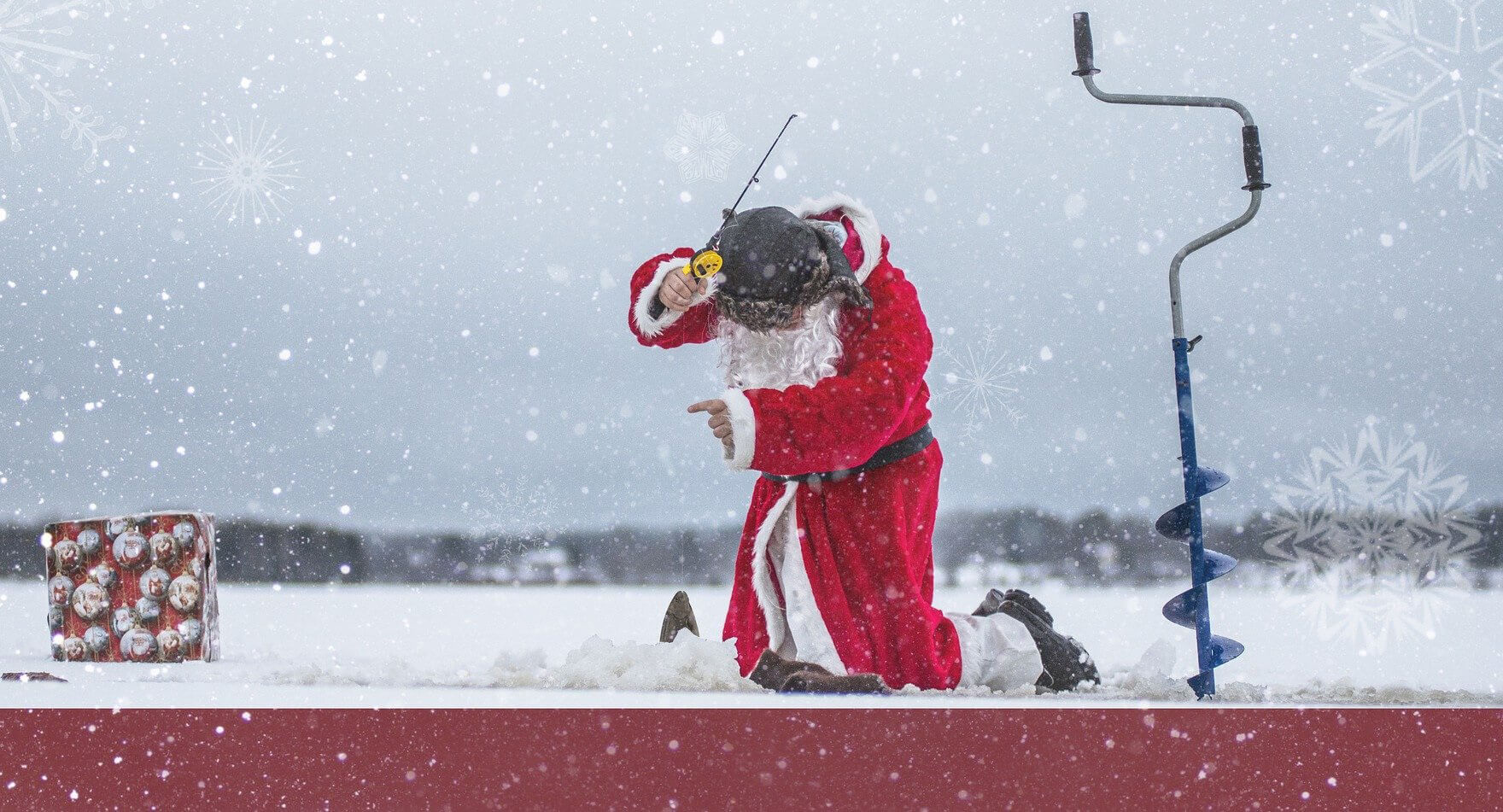
The first month of winter is not very favorable for fishing. Fishing for carp species, with the exception of roach and bream, can be forgotten until spring. However, on fine days on the first ice on the reservoir there is something to do. During this period, it is better to fish with classic jigs with the addition of bloodworms.
On the first ice, winter spinning with a lure or balancer shows itself well: pike and pike perch are quite intensively caught on it. Perch does not disdain the classic jig and small rewinder. The cold-loving burbot will not pass by the hook of the girder equipped with live bait. Its catch “on the snorkel” is being updated: a large jig with the addition of a dead fish.
Tips for Beginner Anglers
It’s time for some final tips for novice anglers:
- Don’t risk it . No bite is worth the unjustified risk, because the fish can be caught another time, but you will definitely not have a second life. First ice and the eve of ice drift portend a notable catch, but the risks are appropriate.
- Experiment . A seasoned angler can catch a full cage even in the most unfavorable weather. Don’t be afraid to experiment with lures, depths, rigs. Maybe the place of deployment will have to be changed more than once!
- Create your own calendar . As mentioned above, the given calendar does not claim to be universal. Create your own calendar based on your own region and climatic conditions.
No tail, no scales, colleagues! Let you always bite, regardless of the vagaries of the weather and other factors!

